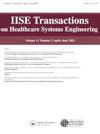用于心脏电导趋势预测和异常检测的深度时空稀疏分解
IF 1.5
Q3 HEALTH CARE SCIENCES & SERVICES
IISE Transactions on Healthcare Systems Engineering
Pub Date : 2021-09-20
DOI:10.1080/24725579.2021.1982081
引用次数: 6
摘要
摘要心脏组织之间的导电通常用偏微分方程建模,即反应-扩散方程,其中反应项描述细胞刺激,扩散项描述电传播。在这种非线性动态系统中检测和识别产生异常电脉冲的心脏细胞对于有效的治疗和规划是重要的。为了对非线性动力学进行建模,模拟已广泛应用于心脏研究和临床研究,以研究心脏病机制并开发新的治疗设计。然而,现有的心脏模型具有很大的复杂性,并且模拟通常是耗时的。我们提出了一种深度时空稀疏分解(DSTSD)方法,用深度时空模型绕过耗时的心脏偏微分方程,检测异常(即故障心脏细胞)的时间和位置。Courtemanche Ramirez-Nattel(CRN)模型生成的数据集验证了这种方法,该模型被广泛用于模拟跨膜电位在跨神经元膜上的传播。所提出的DSTSD在时空平均趋势预测和异常检测方面达到了最佳精度。本文章由计算机程序翻译,如有差异,请以英文原文为准。
Deep spatio-temporal sparse decomposition for trend prediction and anomaly detection in cardiac electrical conduction
Abstract Electrical conduction among cardiac tissue is commonly modeled with partial differential equations, i.e., reaction-diffusion equation, where the reaction term describes cellular stimulation and diffusion term describes electrical propagation. Detecting and identifying of cardiac cells that produce abnormal electrical impulses in such nonlinear dynamic systems are important for efficient treatment and planning. To model the nonlinear dynamics, simulation has been widely used in both cardiac research and clinical study to investigate cardiac disease mechanisms and develop new treatment designs. However, existing cardiac models have a great level of complexity, and the simulation is often time-consuming. We propose a deep spatio-temporal sparse decomposition (DSTSD) approach to bypass the time-consuming cardiac partial differential equations with the deep spatio-temporal model and detect the time and location of the anomaly (i.e., malfunctioning cardiac cells). This approach is validated from the data set generated from the Courtemanche-Ramirez-Nattel (CRN) model, which is widely used to model the propagation of the transmembrane potential across the cross neuron membrane. The proposed DSTSD achieved the best accuracy in terms of spatio-temporal mean trend prediction and anomaly detection.
求助全文
通过发布文献求助,成功后即可免费获取论文全文。
去求助
来源期刊

IISE Transactions on Healthcare Systems Engineering
Social Sciences-Safety Research
CiteScore
3.10
自引率
0.00%
发文量
19
期刊介绍:
IISE Transactions on Healthcare Systems Engineering aims to foster the healthcare systems community by publishing high quality papers that have a strong methodological focus and direct applicability to healthcare systems. Published quarterly, the journal supports research that explores: · Healthcare Operations Management · Medical Decision Making · Socio-Technical Systems Analysis related to healthcare · Quality Engineering · Healthcare Informatics · Healthcare Policy We are looking forward to accepting submissions that document the development and use of industrial and systems engineering tools and techniques including: · Healthcare operations research · Healthcare statistics · Healthcare information systems · Healthcare work measurement · Human factors/ergonomics applied to healthcare systems Research that explores the integration of these tools and techniques with those from other engineering and medical disciplines are also featured. We encourage the submission of clinical notes, or practice notes, to show the impact of contributions that will be published. We also encourage authors to collect an impact statement from their clinical partners to show the impact of research in the clinical practices.
 求助内容:
求助内容: 应助结果提醒方式:
应助结果提醒方式:


